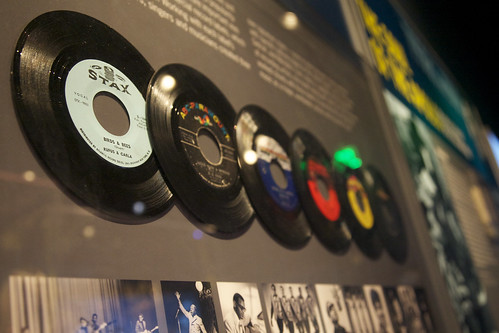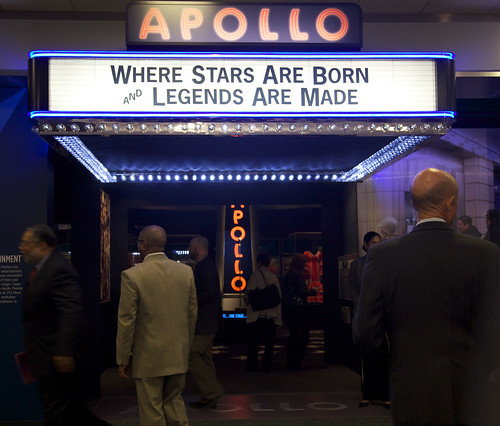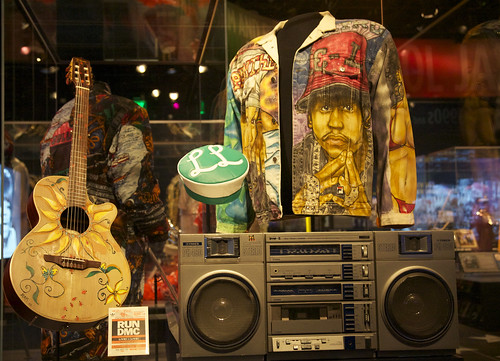
‘Vinyl’
courtesy of ‘tiffany bridge’
When I was a kid, I listened to my parents’ music almost exclusively until I was about 12 years old. Which meant that while my friends were listening to Pet Shop Boys and Material Girl-era Madonna, I was singing along (into my hairbrush, of course) with the Supremes, the Drifters, and Chuck Berry.
While it was an excellent musical education, the local oldies station and my dad’s cassette tapes didn’t do a lot to put that music in the social context in which it belonged. I had learned about the civil rights movement in history class, and the general experience of African-Americans in the United States, but somehow had never connected the dots between the dates in my textbooks with the dates on those album covers until adulthood.
Which is why I so thoroughly enjoyed checking out the Smithsonian National Museum of African American History and Culture (not yet built and currently existing as a gallery in the National Museum of American History) exhibit “Ain’t Nothin’ Like the Real Thing: How the Apollo Theater Shaped American Entertainment.”

‘Apollo Theater Exhibit Facade’
courtesy of ‘tiffany bridge’
The history of the famous Apollo Theater in Harlem is a history of black music in America, yes, but the history of black music in America is a history of American music. The roster of stars who got their start at the Apollo Theater’s Amateur Nights is a who’s who of influential artists who changed how Americans think of popular music.
The exhibit shows a careful attention to acknowledging the broad spectrum of black performing arts, starting with minstrel shows & vaudeville, continuing through jazz, Motown, hip-hop, and every flavor in between. Artists who attribute their success to the Apollo or remember aspiring to perform there one day have enthusiastically lent their props and costumes for the exhibit. So Sammy Davis Jr’s childhood tap shoes are right at home between the video screen playing Fats Waller and the wall displays connecting the dots between the changing style of black entertainment and the rise of the black middle class.
I took lots of photos at the press preview, but I don’t want to spoil it for you. So I’ll just share one more photo. This was my favorite display case, because it showcases pieces from artists contemporary with me.
Oh yes. India.Arie’s guitar. A promotional flyer from Run-DMC. A stage outfit from LL Cool J. And the boombox from the Beastie Boys’ “Fight For Your Right to Party” single cover. I have to admit, I grinned like a big kid to see them.
The exhibit opens Friday, April 23rd and continues through August 29th before it starts to travel around the country. See it at the National Museum of American History. No, seriously, GO SEE IT.





This sounds completely and absolutely bad.ass.